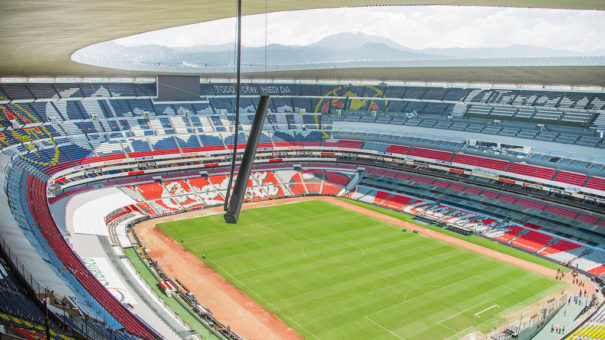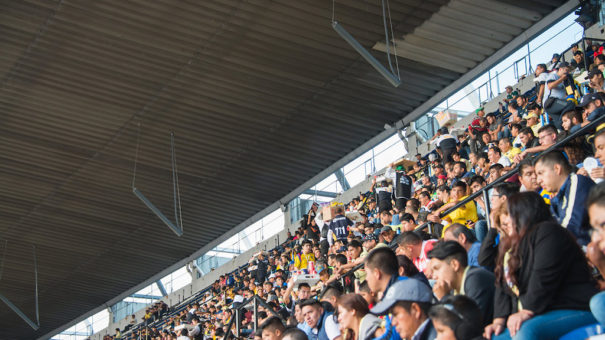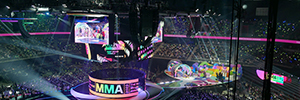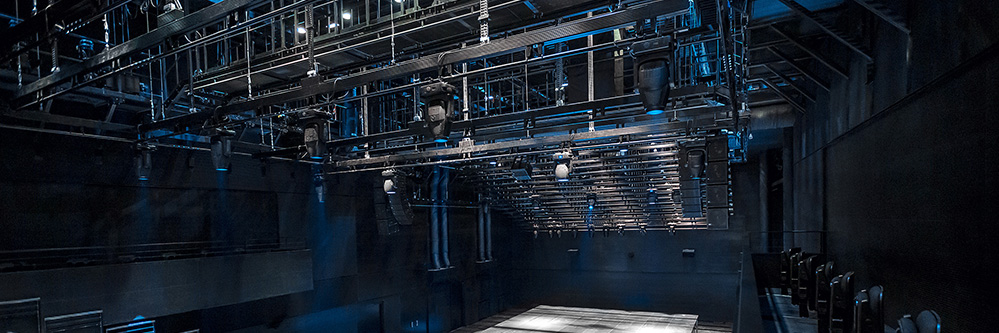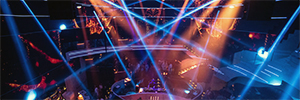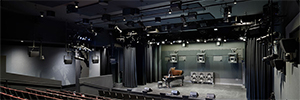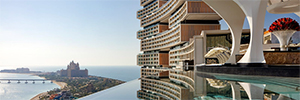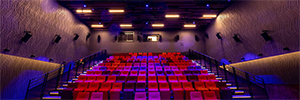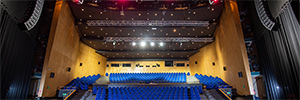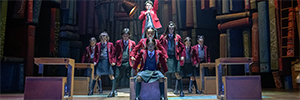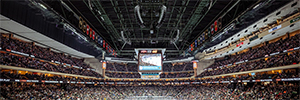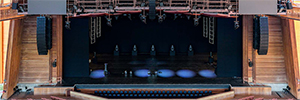Meyer Sound brings its CAL systems with AVB/TSN network technology to the Azteca Stadium in Mexico
This distributed audio system with this network technology is the first that Meyer Sound installs in a sports and multipurpose space.
First stadium to host two World Cup finals -in 1970 and in 1986-, and in the main venue of the first Olympic Games in Latin America (1966), the Azteca Stadium of Mexico City adds to these milestones in being the sports facility located at the highest altitude (2.195 M.) and the one with the highest capacity (87.000 people) of Latin America.
To this list of distinctions was added earlier this year having completed the largest installation to date of column speakers. Meyer Sound LIME. In addition, It is the first audio system of this manufacturer installed in a stadium that uses the latest in AVB / TSN network technology.
The distributed system, composed of 69 Speakers, Broadcasts voice announcements across bandwidth with clarity and intelligibility, Ambient music, as well as the audio of the videos projected on the Panasonic digital screens located in the enclosure.
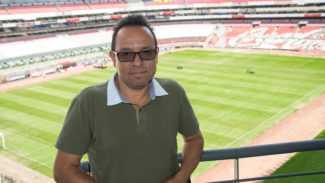 CAL's addressing technology allowed Meyer Sound engineers to fine-tune the extension and tilt of projected audio, and thus achieve uniform coverage, while the narrow profile of CAL speakers keeps sight lines open.
CAL's addressing technology allowed Meyer Sound engineers to fine-tune the extension and tilt of projected audio, and thus achieve uniform coverage, while the narrow profile of CAL speakers keeps sight lines open.
"We contacted Meyer Sound for this new system because they offered us the best solution," recalls the audio manager of the Azteca Stadium., Alejandro Aguirre (in the attached image)-. We needed the latest in audio technology, and the CAL system with AVB met all our requirements".
For the lower stands have been deployed 24 CAL speakers 64, along with 10 600-HP subwoofers, while the upper ones are covered by 26 LIME 96 and eight CAL speakers 64, with a CAL 96 additional covering the playing surface. Two Galaxy network processors 816 control the overall system, and two RMServers on the network are responsible for health monitoring and troubleshooting.
The Galaxy 816 are connected to the master switch, located in the stadium control room, via AVB/TSN, with bidirectional signals routed over a fiber-optic network from the room to the eleven local switches, distributed around the stadium.
Each local switch connects to its assigned group of CAL speakers via Cat-5e cable. All switches are Extreme Networks X440-G2 series.
As Aguirre explains, "The stadium hosts a variety of events besides football.: Concerts, religious events and annual NFL games. It was essential that we had intelligible audio in every seat, with the power and clarity to deliver a full viewing and listening experience alongside HD displays; that hemor solved with Meyer Sound".
This executive recognizes that the complete solution depended, in addition to technological innovation, of design and support. "The Meyer Sound team studied every detail.; They made sure the right people were involved in the project and advised us at every step. There is a level of commitment that differentiates them from other companies in this industry.".
You liked this article?
Subscribe to our RSS feed And you won't miss anything.



